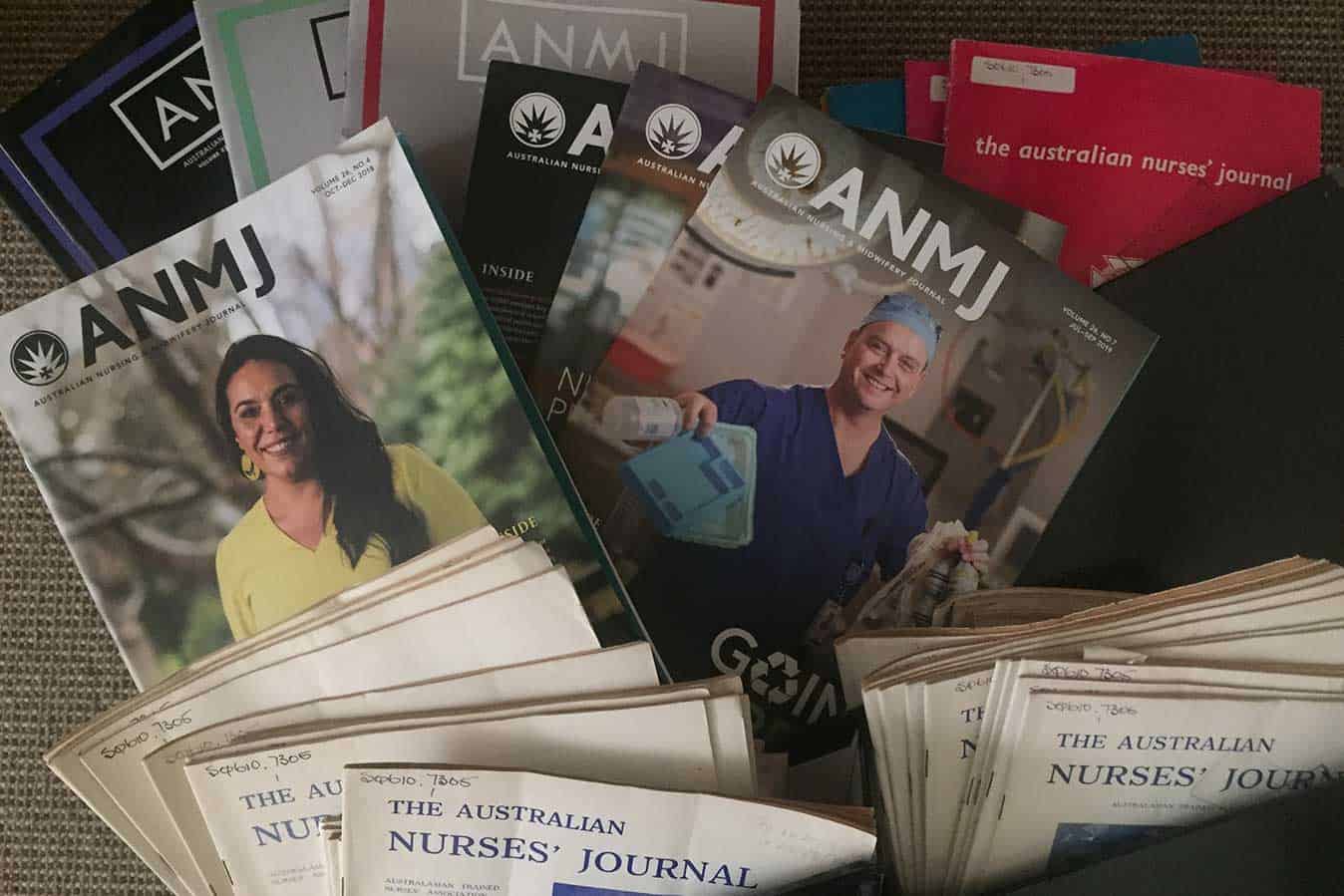Victorian maternal and child health nurse Anne Graham could boast a collection of 45 years of the Australian Nursing Journal (ANJ) if not for Ash Wednesday in which a substantial number were lost to the fires which destroyed her garage.
Ms Graham, who retired two years ago has kept her ANJs since she joined the ANMF Victorian Branch in the 1970s.
She thought she had a full collection of journals until she remembered the Ash Wednesday fires of 16 February, 1983. In Victoria, 47 people died, including 13 CFA firefighters with 150,000 hectares were burnt, 1,620 houses and more than 1,500 other buildings were destroyed.
Ms Graham evacuated with three young children that day while her husband stayed behind as fire encroached on their house in Upper Beaconsfield.
“I remember it well. The fire changed and we could see the smoke. We opened the door and the front was just over the road. I got in the car and took the kids with me. We drove through, the fire was at the side of the road: I could feel the heat coming through the car.
“The fires took our whole garage and backyard. When we were allowed back to our homes, all around our house was dirt, just dirt and black ash. The kids would come in from playing every night covered in black.
“Memories come back when the conditions were what they were like on that day, with that hot wind.”
Ms Graham started her general nursing training, aged 17, at the Royal Melbourne Hospital in February 1970. The group is holding a 50th reunion anniversary next February. She then went on to do her midwifery at Dandenong Hospital before she completed a two-year diploma in maternal and child health.
“I started in a job share position with a friend; we did our MCH training together at Lincoln College. The advertised job was full time. We’d just come out of our training with our diploma and we applied for a job share and we got it, doing 2.5 days each.
“I had young kids so it suited. Over time I worked part time and full time and I became the MCH coordinator for about 15-20 years.”
The Australian Nursing & Midwifery Journal (ANMJ) has informed her practice over her career.
“It became even more important with the advent of national legislation and the requirement to document our professional development hours. I needed to have professional development hours in maternal and child health.
“Reading a professional magazine was part of that. It [the ANMJ] was keeping me up to date in whatever was happening in child and maternal health, to health policy and changes in the profession.”
Ms Graham worked for 30 years in MCH for Cardinia Shire Council, the same municipality in which she lives.
“I have seen a difference in practice; it’s not the same service. When I first started parents would come in when they wanted to; we saw them more regularly. They wouldn’t have to have an appointment. They would come and sit and chat.
“Now they have regular visits in the first 12 months but then its 18 months and then three and a half years. Once upon a time they would come in every three months right up until they started school.”
Part of the changes are due to advances in technology, Ms Graham considers.
“Technology has changed a lot. Most parents aren’t so isolated now. First time parents’ groups are not attended as much, they have other social networks.”
Ms Graham says she really enjoyed maternal and child health nursing as her area of choice in the profession.
“I enjoyed the mums and families. I got my teeth into postnatal depression and started up a support group locally. I also enjoyed the work with enhanced services with vulnerable families.”
However she is now enjoying retirement with four children and seven grandchildren aged four to 20 years, which keep her busy and time for herself, including tai chi.
Ms Graham has decided to part with her still considerably large collection of ANMJs, which have now found a new home with the ANMF Federal Office librarian.
“I’m going to be able to free up space! I have no idea why I kept them all; I’m not a hoarder. I read them and filed them.”








